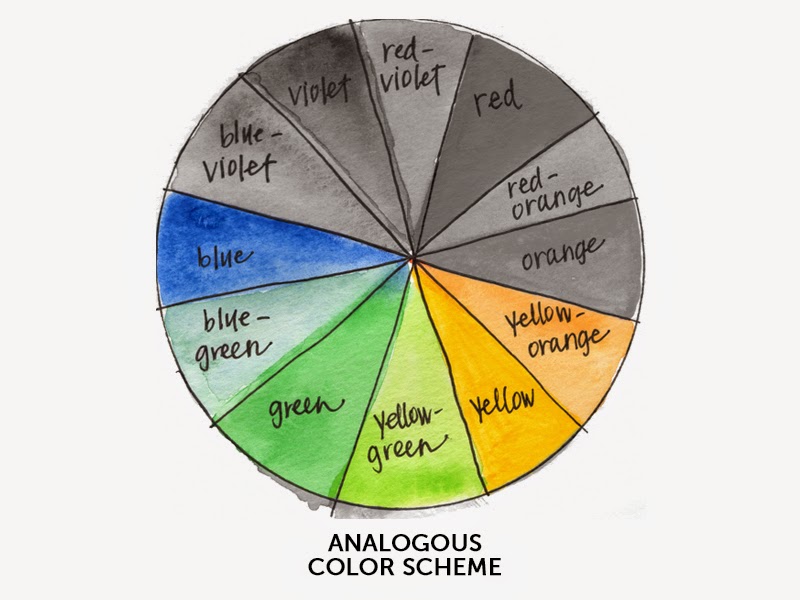the basic color wheel
I don't know about you, but I get a little bit giddy when I see any type of color wheel. Seeing the colors together in order just makes me happy.
***
Complementary colors are straight across from each other on the color wheel. Here I've shown you Red and Green, but this could also be Orange and Blue, Yellow and Violet, or Blue-Green and Red-Orange. (You get the idea.) It's important to note that when you create a complementary color scheme, one color should be vibrant and the other should be more muted so your eyes don't hurt when you look at it!
Double Complementary just means 2 pairs of complementary color combos put together. I've shown you Orange & Blue paired with Yellow & Violet.
Monochromatic color schemes use only one color. You can use many shades and tones as long as they are in the same color family!
Split-Complementary means that you start with the complementary, in this case I chose Orange & Blue, and then instead of Blue, the color scheme splits and goes to the colors directly next to that color. We ended up with Orange, Blue-Violet & Blue-Green. It could also be Red-Violet paired with Green and Yellow. It's fun to play around to see what combos you can come up with!
Analogous color schemes are at least 3 colors directly next to each other are paired together.
Triad color schemes are equally spaced apart on the color wheel. This could also be the primary colors, (Red, Yellow & Blue) or Secondary Colors (Orange, Green & Violet) put together.
I hope this little post helps you when you're stuck about what colors to use on your next creative project! It's fun to play around with different combinations to see what you come up with! Comment below and tell me what your favorite color schemes are!







No comments
Post a Comment